Botanical Name: Acer cappadocium
Common Name: Cappadocian maple
Family: Sapindaceae
Distribution/Origin: Asia Minor, northern India
Leaf: opposite, palmately lobed, purply green in spring, mature to dark green by summer
Bud: subglobose, insides glabrous, opposite
Flower: corymbs of 15-30, yellow-green with 5 petals
Fruit/Seed: double samara with 2 winged seeds, seeds are disc shaped strongly flattened
Stem/Bark: greenish grey, smooth when young and shallowly grooved with age
Size: 30-35’ height, 20-25’ spread
Habit: may sucker from roots to form extensive groves over time
Form: broad rounded crown
Soil conditions: humusy, well drained, acidic
Moisture: even moisture, doesn’t like to dry out
Sun: full sun to partial shade
Exposure:
Landscape use: bloom time April, specimen tree, shade tree, parks
Notes: Specific epithet is in reference to Cappadocia (ancient region of Asia Minor now part of central Turkey) where this tree was discovered growing in the late 1700s.




Botanical Name: Acer x freemanii
Common Name: freeman maple
Family: Sapindaceae
Distribution/Origin: garden origin
Leaf: red petioles, 3-5 lobed blades,
Bud: opposite, red
Flower: globular clusters
Fruit/Seed: fruit sometimes absent, when present; 2 joined samaras per stalk, semi-divergent wings, pendulous clusters from stems
Stem/Bark: brown-red twigs, bark is grey, smooth and thin in youth, slightly furrowed with age
Size: 40-60’ height, 20-40’ spread
Habit: upright branching, rapid growth
Form: columnar, narrow, oval, pyramidal in youth
Soil conditions: rich, well drained
Moisture: even moisture, will tolerate dry or wet sites
Sun: full sun
Exposure:
Landscape use: privacy screen, small areas, shade tree, accent tree
Notes: hybrid of red maple and silver maple
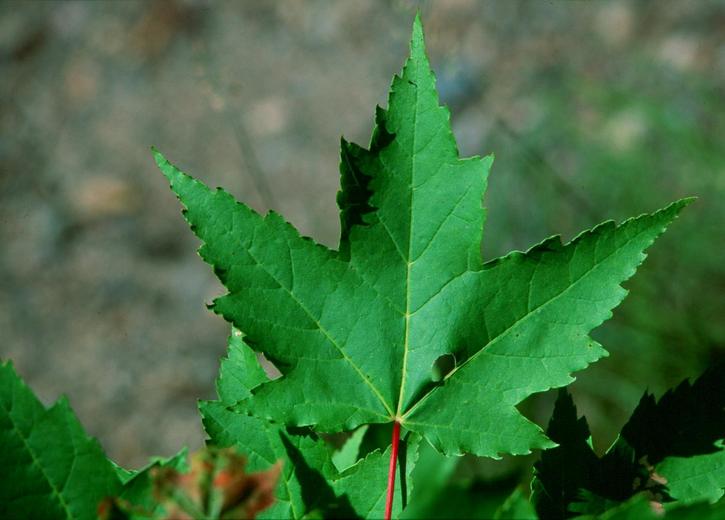



Botanical Name: Castanea sativa
Common Name: sweet chestnut
Family: Fagaceae
Distribution/Origin: Europe, Asia Minor
Leaf: oblong-lanceolate, boldly toothed margins
Bud: alternate, overlapping scales
Flower: both sexes are long upright catkins, males in the upper part with females in the lower, female flowers form a spiky sheath that protects from predators
Fruit/Seed: spiny cupules containing 3-7 brownish nuts
Stem/Bark: often has a net-shaped pattern with deep furrows or fissures running spirally in both directions up the trunk
Size: 66-115’ height, up to 50’ spread
Habit: spreading, branched
Form: irregularly rounded
Soil conditions: prefers well drained, can grow in very poor soils
Moisture: even moisture
Sun: full sun
Exposure:
Landscape use: street tree, garden use, parks, shade tree, edible forest
Notes: Roman soldiers were given chestnut porridge before going into battle. Century old specimens can be found around Europe

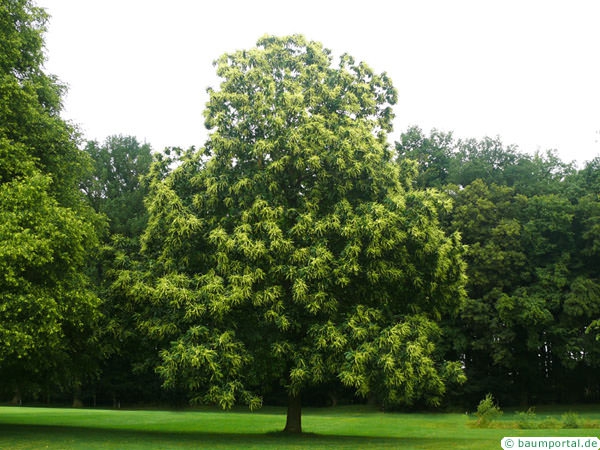


Botanical Name: Carpinus betulus
Common Name: hornbeam
Family: Betulaceae
Distribution/Origin: Asia, Europe
Leaf: dentate to serrate margins, prominent veins giving it a corrugated texture
Bud: alternate, pressed close to the twig
Flower: male and female catkins, green to yellow
Fruit/Seed: nut, green-yellow-brown with 3 lobed bracts
Stem/Bark: fluted and crooked trunk, smooth and greenish grey even with age
Size: 49-82’ height,
Size: 49-82’ height,
Habit: twiggy, multi stemmed, upright
Form: irregular, widely round
Soil conditions: well drained, average
Moisture: medium
Sun: partial shade to full sun
Exposure: can tolerate air pollution
Landscape use: shade tree, boulevards or parking lot meridians, hedge, street tree
Notes: burns hot and slow - ideal for firewood




Botanical Name: Dicksonia antarctica
Common Name: soft tree fern
Family: Dicksoniaceae
Distribution/Origin: Australia
Leaf: pinnately divided rosettes
Bud: curled fronds emerge from base
Bud: curled fronds emerge from base
Flower: n/a
Fruit/Seed: n/a
Stem/Bark: “trunk” is merely layers of decaying remains of earlier growth which forms a medium through which the roots grow
Size: 15-49’ height,
Habit: arching fronds
Form: stout, erect
Soil conditions: organically rich, heavily mulched, well draining
Moisture: even moisture
Sun: partial shade to full shade
Exposure: sheltered
Landscape use: ornamental interest, shade garden, flower borders, container gardening
Notes: fertile and sterile fronds are often layered
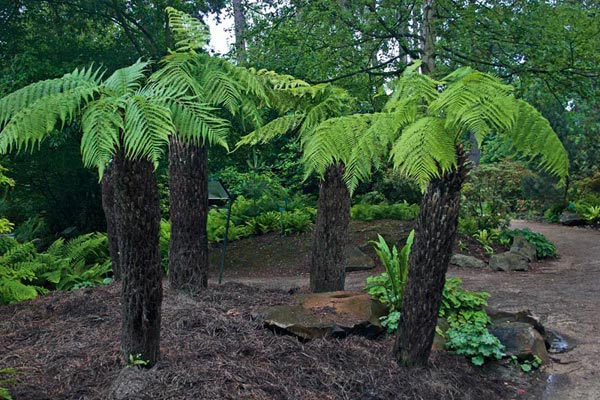



Botanical Name: Fraxinus excelsior
Common Name: common ash
Family: Oleaceae
Distribution/Origin: Europe
Leaf: long, pinnately compound, 7-13 leaflets, serrated margins
Bud: jet black in color (striking!), ovoid, opposite arrangement
Flower: no petals or sepals, purple and green in color, female and male, wind pollinated, dense clusters of panicles, somewhat conspicuous
Fruit/Seed: samara, broad, hangs in bunches, often called “ash keys”, 1 seeded
Stem/Bark: smooth and pale grey in youth, thick and vertically fissured with age. heartwood is dark olive-brown
Size: 66-115’ height, up to 65’ spread
Habit: spreading, upright
Form: rounded, oval
Soil conditions: average soils, can withstand a very acidic pH, well drained
Moisture: even moisture, somewhat wet
Sun: full sun
Exposure: can tolerate atmospheric pollution
Landscape use: woodland garden canopy, bog garden, wet sites, flowers in early spring, shade tree, street tree
Notes: Is one of the most versatile woods and was widely used in the countryside in the past. Has great flexibility, shock resistance and resistance to splitting, an ideal choice for walking sticks.




Botanical Name: Fraxinus americana
Common Name: white ash
Family: Oleaceae
Distribution/Origin: North America
Leaf: glaucous undersides, odd pinnately compound, 7 leaflets, oval to oblong lanceolate, turns yellow with purple shading in fall
Bud: terminal bud is large, brown with leathery scales, flanked by 2 lateral buds, opposite alternate arrangement
Flower: clusters of apetalous male and female flowers (occurring on separate trees), purple, females in loose panicles, males in tighter clusters
Fruit/Seed: drooping clusters of 1 winged flattened samaras, ripen in fall and may persist on trees in winter, full rounded seed cavity
Stem/Bark: grey in color, develops diamond shaped ridging when mature
Size: 60-80’ height, 60-80’ spread
Habit: upright, spreading
Form: pyramidal in youth, rounded when mature
Soil conditions: well drained loams, organically rich
Moisture: average water needs, moderate drought tolerance
Sun: full sun
Exposure: sheltered from strong winds
Landscape use: shade tree, street tree, habitat for birds
Notes: choice timber for baseball bats



Botanical Name: Fraxinus pennsylvanica
Common Name: green ash
Family: Oleaceae
Distribution/Origin: garden origin, North America (was getting mixed answers)
Leaf: compound leaf, odd pinnate, glossy, 5-7-9 leaflets, serrate margins
Bud: terminal buds, clean leaf scars, accessory buds, opposite, dark brown
Flower:dioecious, dark red to purple, not showy
Fruit/Seed: samara, male cultivar does not bear fruit
Stem/Bark: deeply fissured, diamond shaped ridging on mature trees
Size: 32-49’ height, 32-49’ spread
Habit: spreading, upright
Form: oval, vertical, irregular crown
Soil conditions: average, prefers humusy, well drained
Moisture: medium wet
Sun: full sun
Exposure:
Landscape use: specimen plant, street tree, tall background accent
Notes: as with white ash, wood is highly valued for crafting tool handles

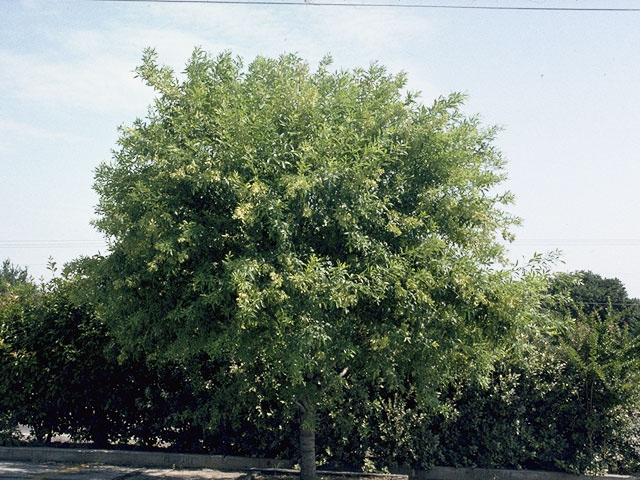

Botanical Name: Laburnum x watereri “Vossii”
Common Name: golden chain tree
Family: Fabaceae
Distribution/Origin:
Leaf: compound, trifoliate
Bud: alternate, fuzzy
Flower: pendulous racemes, yellow, wisteria like
Fruit/Seed: small flattened pods, seeds are poisonous if ingested
Stem/Bark: stems and branches are shiny smooth olive green, main trunk develops rough fissuring with age
Size: 22-32’ height, 22-32’ spread
Habit: stiff, short shoot, long shoot
Form: flat top, reverse pyramid
Soil conditions: organically rich, well drained
Moisture: medium moisture
Sun: full sun to partial shade
Exposure: doesn’t like extreme heat, benefits from some shelter
Exposure: doesn’t like extreme heat, benefits from some shelter
Landscape use: hedge, flowering tree, accent plant, ornamental, blooms May-June
Notes: requires cool roots

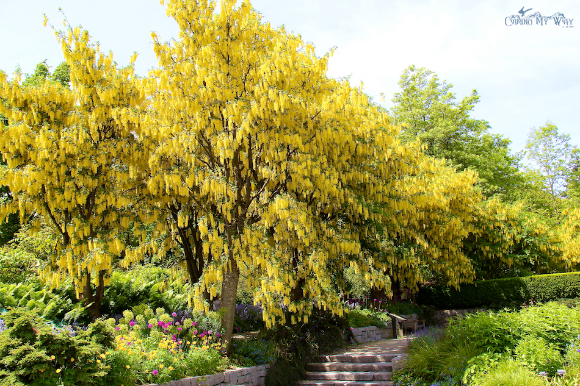
(this photo is from Van Dusen :) )


(this photo is from Van Dusen :) )
Botanical Name: Parrotia persica
Common Name: ironwood
Family: Hamamelidaceae
Distribution/Origin: northern Iran
Leaf: simple, undulating margins, pinnate venation, ovate to oblong
Bud: alternate, pubescent brown, stalked
Flower: perfect, not showy, apetalous, dense red stamens, brownish bracts
Fruit/Seed: brown capsules, two parted containing 2 seeds in each half
Stem/Bark: mildly exfoliating, smooth
Size: 20-40’ height, 20-30’ spread
Habit: irregular branching, short shoot, long shoot, spreading, multi stemmed
Form: rounded
Soil conditions: average, slightly acidic, well drained, adaptable
Moisture: medium
Sun: full sun
Exposure: tolerates air pollution, light shade
Landscape use: specimen plant, street tree, boulevards and meridians, woodland garden, flowers February - March
Notes: very strong wood (hence common name), ideal for tool handles



Botanical Name: Phormium tenax
Common Name: New Zealand flax
Family: Xanthorrhoeaceae
Distribution/Origin: New Zealand
Leaf: long lateral blades, straplike, entire margins
Bud:
Flower: offset spikes of orange to red flowers, panicles
Fruit/Seed:
Stem/Bark:
Size: 1-6’ height, 1-3’ spread
Habit: spiky, fan like
Form: round, clumping
Soil conditions: average soils, will tolerate poor soils
Moisture: consistent moisture
Sun: full sun to partial shade
Exposure: will tolerate considerable shade, needs good winter protection in cold regions
Landscape use: rarely flowers, ornamental, mass plantings, beds, borders
Notes: densely rhizomatous. Used for making cloth because of fibers in plant.
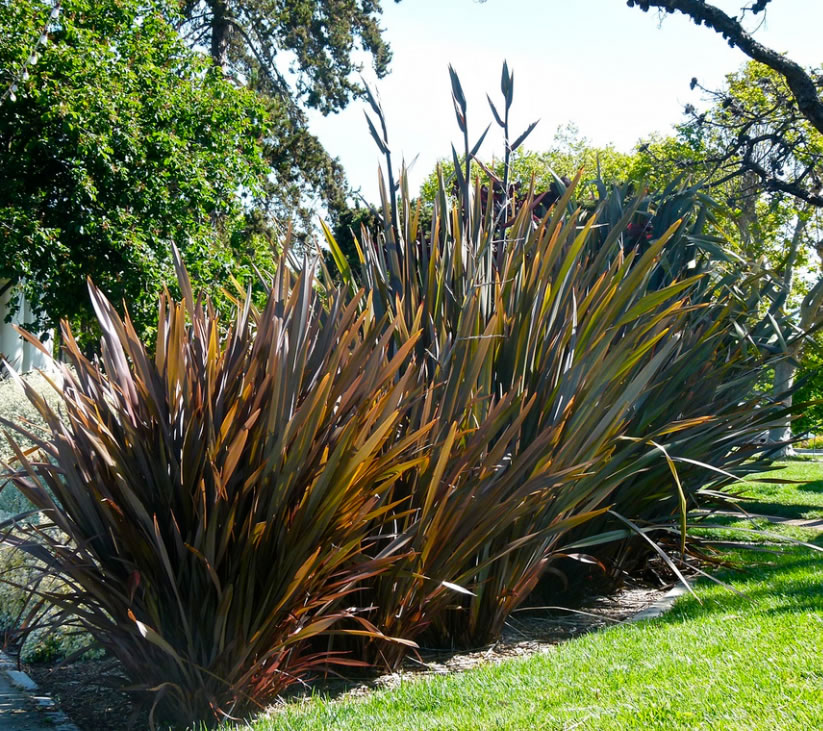
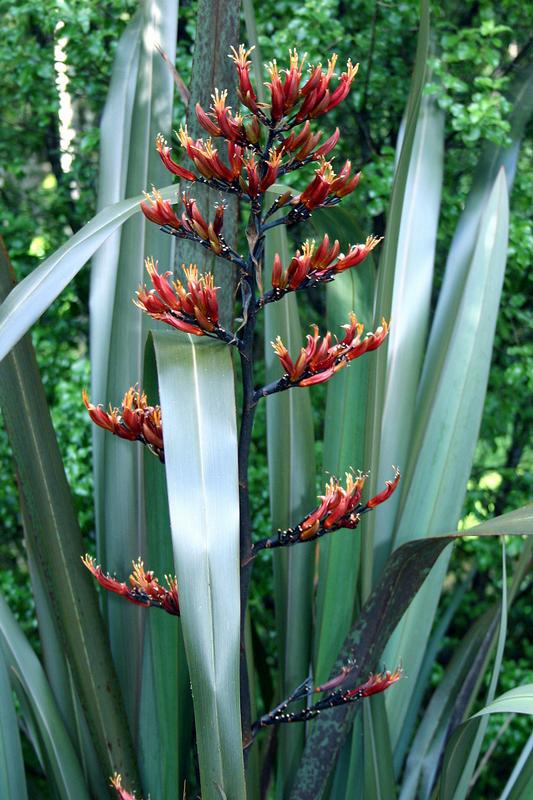


Botanical Name: Phyllostachys vivax
Common Name: Chinese timber bamboo
Family: Poaceae
Distribution/Origin: Asia
Leaf: simple, alternate, lanceolate, acute apex, entire margins
Bud: grooved alternate nodes
Flower: panicle like, spikelet, perfect, brown to purple, usually only flowers when plant is about to die
Fruit/Seed: grain, brown
Stem/Bark: showy, smooth
Size: 40-45’ height, 16-22’ spread
Habit: arching, spreading, stiffly upright, multi stemmed
Form: clumping, vertical, oval
Soil conditions: well drained, loams, humusy
Moisture: even moisture
Sun: full sun to partial shade
Exposure:
Landscape use: mass plantings, contained areas, naturalized areas, flowers in July-August
Notes: most hardy of the timber bamboos, grows rapidly, contain or you could be asking for trouble.
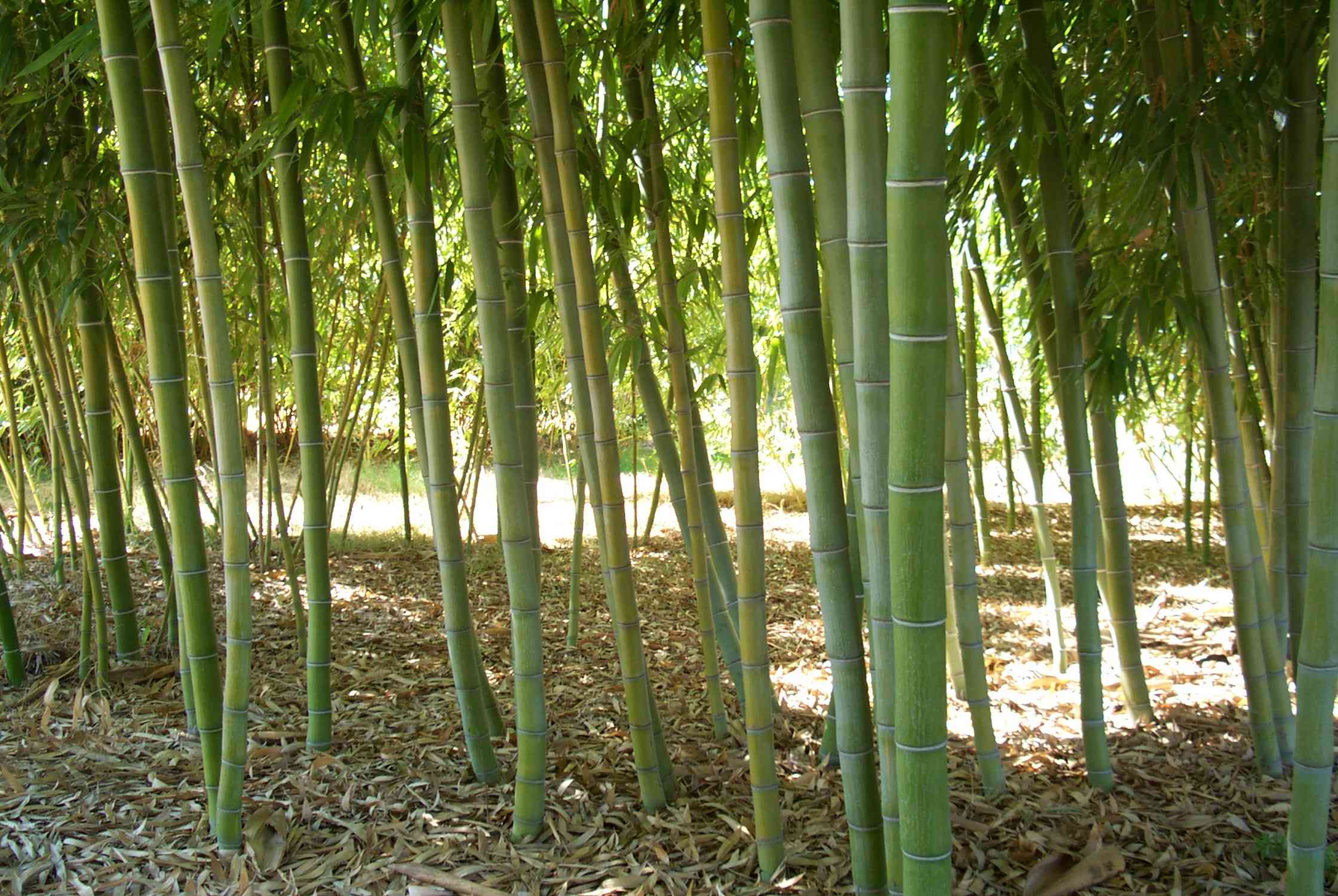



Botanical Name: Physocarpus capitatus
Common Name: Pacific ninebark
Family: Rosaceae
Distribution/Origin: British Columbia/West Coast
Leaf: trilobed, serrated margins, pubescent undersides, ovate
Bud: alternate, flower buds pinkish
Flower: white corymbs, clustered, red stamens
Fruit/Seed: follicle of aggregate fruit, inflated glossy red pod which dries to brown and releases seeds
Stem/Bark: exfoliating, papery, showy, tan to dark brown
Size: 10-16’ height, 10-14’ spread
Habit: suckering, multi stemmed, arching, dense, twiggy
Form: round, upright
Soil conditions: average, acidic, humusy
Moisture: consistent moisture
Sun: full sun to semi shade
Exposure:
Landscape use: attractive to beneficial insects, filler, group plantings, mixed shrub border, screening, spring interest, wetland, flowers May-June
Notes: like eastern ninebark, is named for characteristic exfoliating bark which reveals many interesting shades as it sheds
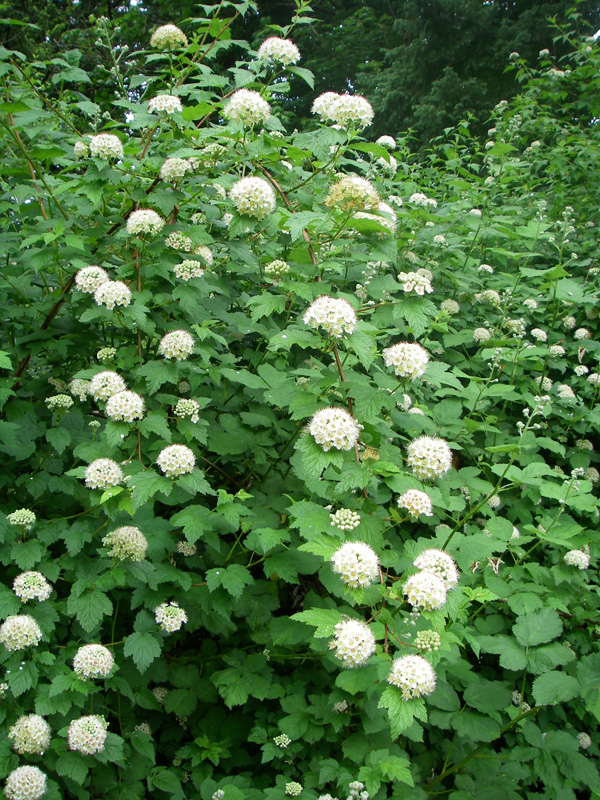



Botanical Name: Platanus x acerifolia
Common Name: London plane
Family: Platanaceae
Distribution/Origin: Garden origin
Leaf: thick, stiff textured, broad, palmately lobed, young leaves have stiff hairs that exfoliate off as season moves on, clasping petioles
Bud: alternate, smooth ovoid red buds
Flower: borne in 1-3 dense spherical pendulous clusters, male and female flowers separate
Fruit/Seed: globose, achene, green to brown
Stem/Bark: pale green-grey, smooth and exfoliating or buff brown and non exfoliating
Size: 66-98’ height, 49-82’ spread
Habit: irregular, open, spreading
Form: columnar, round
Soil conditions: well drained, adaptable to variety of soils
Moisture: moderate
Sun: full sun
Exposure: can handle compaction, moist sites, urban conditions
Landscape use: shade tree, specimen, street tree
Notes: relatively anthracnose resistance is why it is becoming a favored tree among nurseries and growers



Botanical Name: Quercus acutissima
Common Name: sawtooth oak
Family: Fagaceae
Distribution/Origin: Asia
Leaf: sawtooth like triangular lobes, elliptical to lanceolate, glossy surfaces, dark green
Bud: black-brown, small overlapping scales, alternate
Flower: wind pollinated catkins, monoecious, yellowish green, seperate male and female
Fruit/Seed: acorn, bicolored with orange basal half grading to a green-brown tip, densely covered in mossy bristles
Stem/Bark: lightly fissured, grey to black, corky ridges with age
Size: 49-72’ height, 49-82’ spread
Habit: spreading
Form: round, broad
Soil conditions: well drained, rich, humusy
Moisture: medium
Sun: full sun
Exposure: tolerant of drought
Landscape use: good habitat and food source for critters, screening, street tree, shade tree, tall background plant
Notes: better pest resistance than other types of oak, chlorosis will occur if tree is in neutral to alkaline soils.




Botanical Name: Quercus x turneri
Common Name: Turner oak
Family: Fagaceae
Distribution/Origin: Garden origin
Leaf: evergreen/semi-evergreen, broadleaf, weakly toothed near apex, shallow lobes, leathery, dark lustrous green above, cuneate bases
Bud: alternate, brown
Flower: insignificant
Fruit/Seed: several acorns on a tomentose stalk
Stem/Bark: purplish grey, smooth, becoming shallowly ridged with age
Size: up to 55’ height, 49’ spread
Habit: mild twisted branching, branched low from trunk
Form: ovate-round, spreading crown
Soil conditions: well drained
Moisture: even moisture
Sun: full sun to partial shade
Exposure:
Landscape use: specimen, shade tree, street tree, good habitat and food for critters
Notes: cross between Quercus ilex and Quercus robur, made by cloning/grafting



Botanical Name: Trachycarpus fortunei
Common Name: Chinese windmill palm
Family: Arecaceae
Distribution/Origin: Asia
Leaf: large, fan shaped, dissected, simple, leathery, glossy, orbicular to rounded, long petioles
Bud: spirally arranged leaves
Flower: floriferous panicles, dioecious, yellow to green yellow
Fruit/Seed: blue-black drupes in large clusters
Stem/Bark: very rough, persistent leaf bases clasping stems as layers of coarse fibrous material
Size: 16-19’ height, 6-10’ spread
Habit: upright
Form: vase
Soil conditions: loam, chalk, sand, well drained
Moisture: even moisture
Sun: full sun, partial shade
Exposure: needs protection from strong or cold drying winds and hard winter frosts
Landscape use: accent plant, specimen plant, beds, flowers in June - July
Notes: hardy to Vancouver




Botanical Name: Wisteria floribunda
Common Name: Japanese wisteria
Family: Fabaceae
Distribution/Origin: Asia
Leaf: odd-pinnately compound, ovate to lanceolate, midrib has trench, entire undulated margins
Bud: alternate, acute, 2 little dots at base, leaf node has spine like projection
Flower: bilaterally symmetrical, racemes of blue-violet, pink-white pea like florets
Fruit/Seed: long legumes/pods, not showy
Fruit/Seed: long legumes/pods, not showy
Stem/Bark: lightly fissured, tan-brown
Size: 72-98’ height, 16-22’ spreading
Habit: irregular, climbing, liana
Form: forms to structures it climbs
Soil conditions: well drained, average soils, nitrogen fixing roots
Moisture: even moisture
Sun: full sun to partial shade
Exposure: adaptable to dry soils
Landscape use: blooms June-July, arbor or trellis, walls, fences
Notes: wraps in a clockwise direction, longest flower racemes of any wisteria
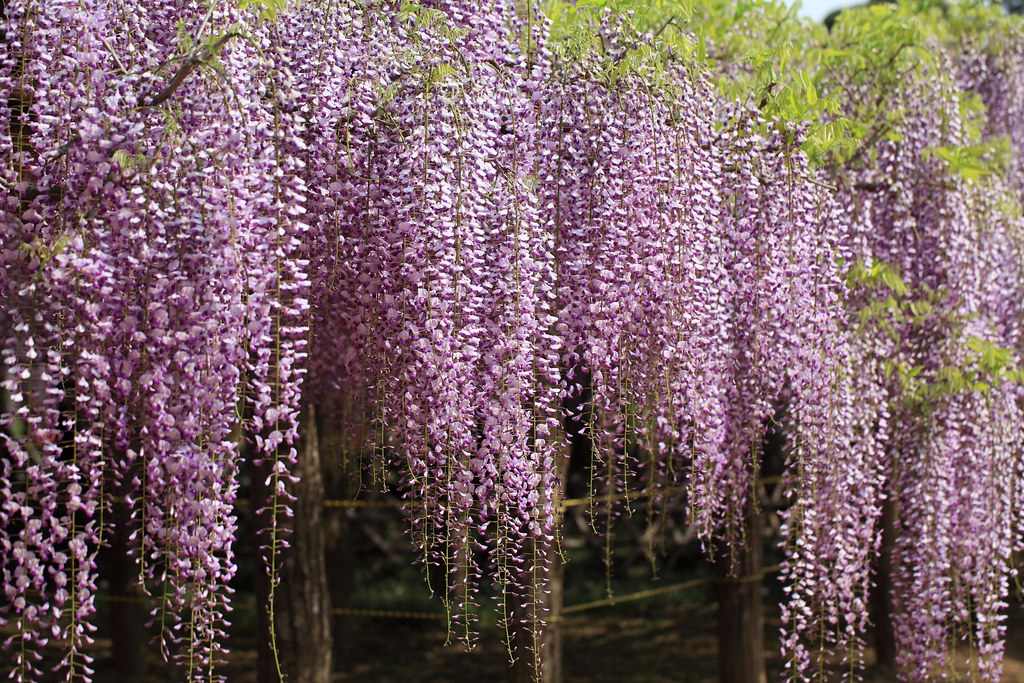



Botanical Name: Wisteria sinensis
Common Name: Chinese wisteria
Family: Fabaceae
Distribution/Origin: China
Leaf: elliptic to ovoid, compound, odd pinnate, glabrous surfaces
Bud: alternate
Flower: lilac blue to white, drooping racemes
Fruit/Seed: brown pods, flattened, velvety, disc like seeds (poisonous)
Stem/Bark:
Size: 15-30’ height, 15-30’ spread
Habit: climbing, liana
Form: irregular, fits to structures it climbs
Soil conditions: well drained, average soils
Moisture: moderate
Sun: full sun to partial shade
Exposure:
Landscape use: arbor, trellis, pergola, structures, scent garden, blooms April-May
Notes: wraps around counter clockwise




Botanical Name: Zelkova serrata
Common Name: Japanese zelkova
Family: Ulmaceae
Distribution/Origin: Asia
Leaf: simple, leathery, glabrous, elliptic, oblong
Bud: alternate, tiny, red, ovoid, dark brown scales
Flower: staminate and pistillate, clusters, green, insignificant
Fruit/Seed: drupe, ovate, wingless
Stem/Bark: lenticels, exfoliates in patches to reveal orange inner bark, greyish white to brown
Size: 72-98’ height, 49-82’ spread
Habit: multi stemmed, erect
Form: rounded crown, upright
Soil conditions: well drained, prefers mineral rich soils but is adaptable
Moisture: even moisture
Sun: full to partial sun
Exposure: tolerant to heat, drought, nutrient poor areas
Landscape use: ornamental, parks, large areas, lawns
Notes: a popular plant to train as a bonsai tree 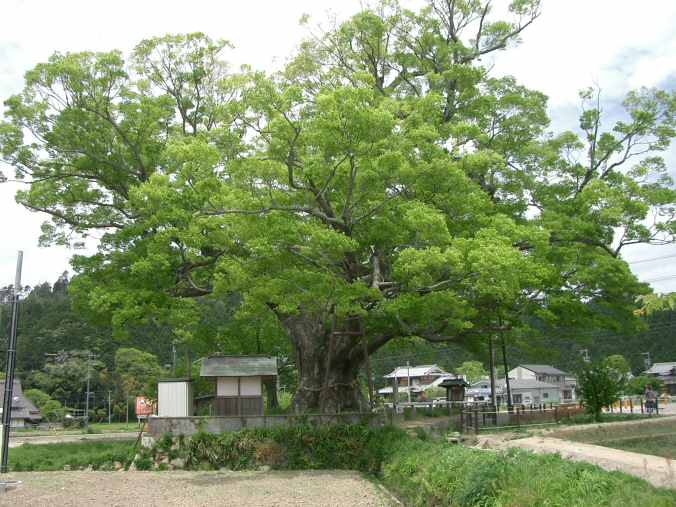
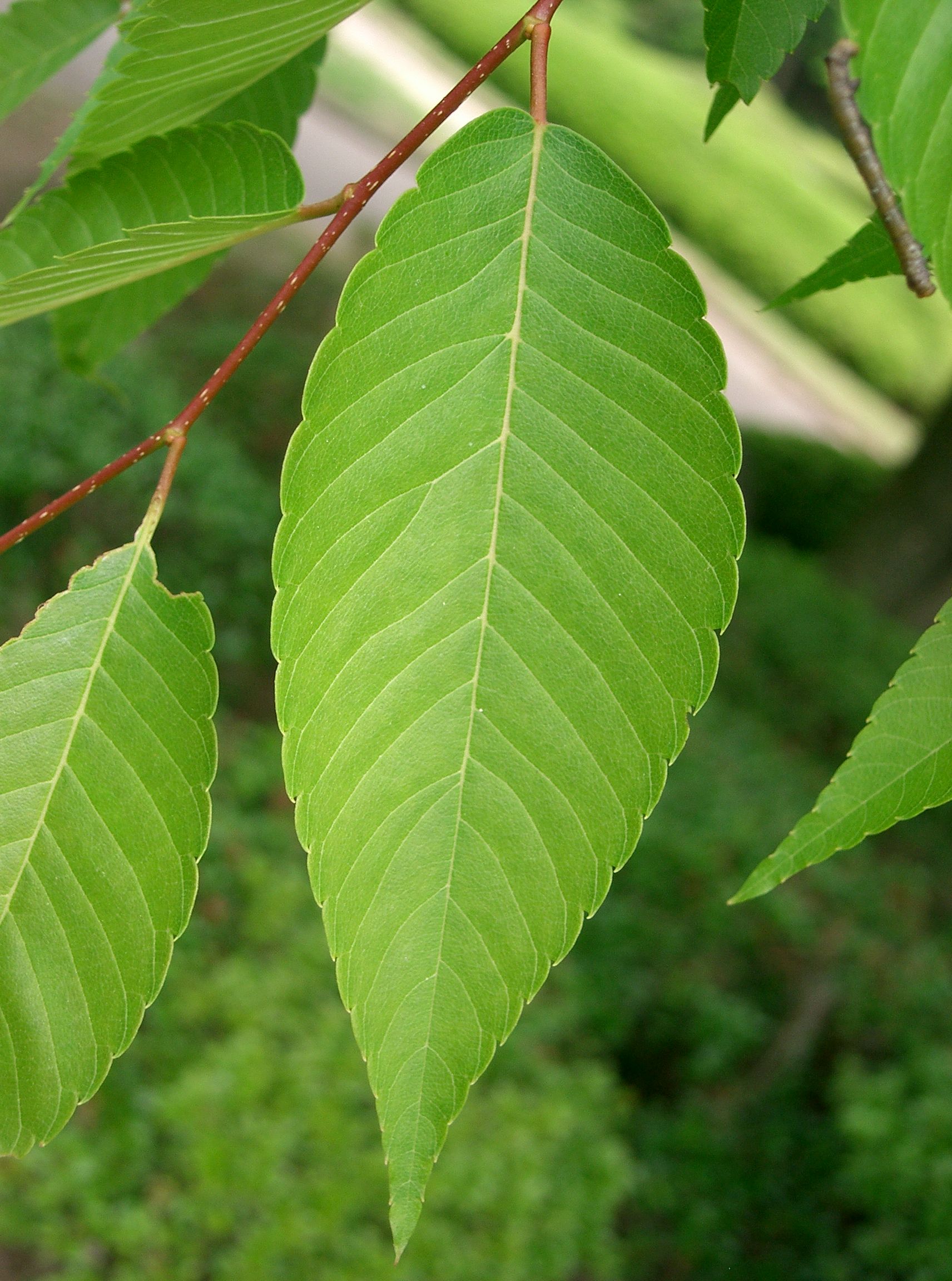
No comments:
Post a Comment